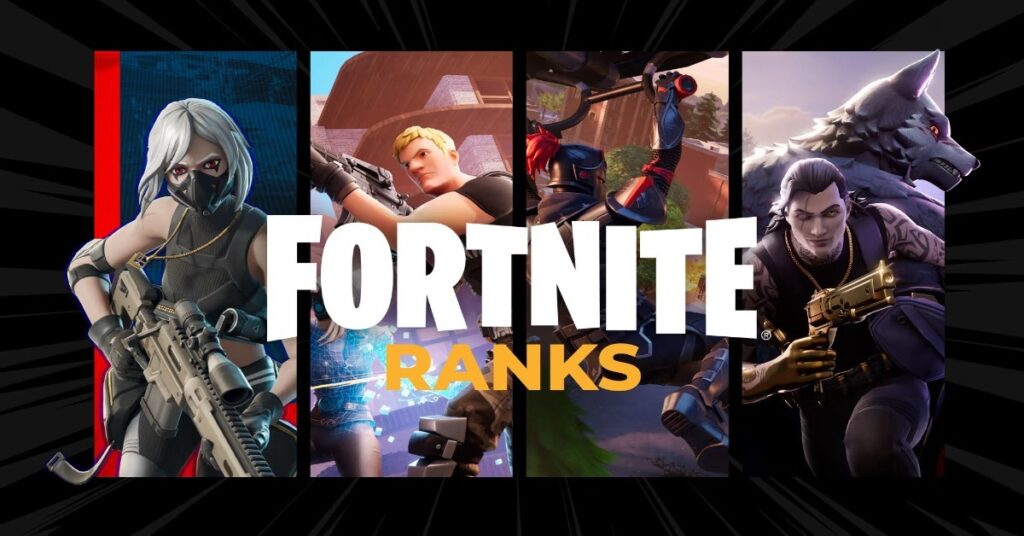
If you’ve spent any time playing Fortnite competitively, you’ve probably heard players talk about ranks in Fortnite and with Ranked modes now in place for the past two years, the competitive side of Fortnite is stronger than ever.
But it’s not just about Battle Royale anymore. Whether you prefer Zero Build, OG, Reload, or Ballistic, competitive options are now available across the board — and understanding how ranks and progression work in each mode is key to improving.
In this guide, we’re diving deep into more than just the list of Fortnite ranks in order. From a breakdown of the tier system to tips on how to rank up and prepare for seasonal resets, we’ve covered everything you need to know to get ahead. Whether you’re on a console, mobile, or PC (with or without crossplay), mastering the ranked system is your first step toward climbing Fortnite’s competitive ladder in one of the biggest games of all time.
What Are Fortnite Ranks?
Fortnite’s ranking system is designed to match players with others of similar skill levels. This helps keep matches fair and competitive, whether you’re a casual player or aiming for high-tier glory. Ranks are split into various divisions, and as you perform well in matches, you climb up. If your performance drops, your rank can fall too — it’s a dynamic system.
Fortnite ranks & tiers

Here is a table showing all tiers and ranks currently in Fortnite:
| Tier | Rank | Description |
|---|---|---|
| Bronze | Bronze 1 | Starting point for all new Ranked players. |
| Bronze 2 | Early sign of progression. | |
| Bronze 3 | Final stage before entering the Silver tier. | |
| Silver | Silver 1 | Most common rank; where many players find themselves. |
| Silver 2 | A sign of growing consistency. | |
| Silver 3 | One step away from entering the Gold tier. | |
| Gold | Gold 1 | Above-average performance begins here. |
| Gold 2 | Players start showing refined skill and awareness. | |
| Gold 3 | Nearing mid-to-high tier territory. | |
| Platinum | Platinum 1 | Skilled and increasingly reliable performance. |
| Platinum 2 | Well-rounded gameplay starts to show. | |
| Platinum 3 | Ready to challenge higher-ranked players. | |
| Diamond | Diamond 1 | High-skill gameplay begins here. |
| Diamond 2 | Strategy and consistency are key at this stage. | |
| Diamond 3 | A short leap from the top competitive ranks. | |
| Elite | Elite | Achieved by around 4% of players — marks you as a top-tier competitor. |
| Champion | Champion | Held by only 1.6% of players — a rare and prestigious rank. |
| Unreal | Unreal | The highest rank in Fortnite; fewer than 1% reach this elite position. |
What is the highest rank in Fortnite?
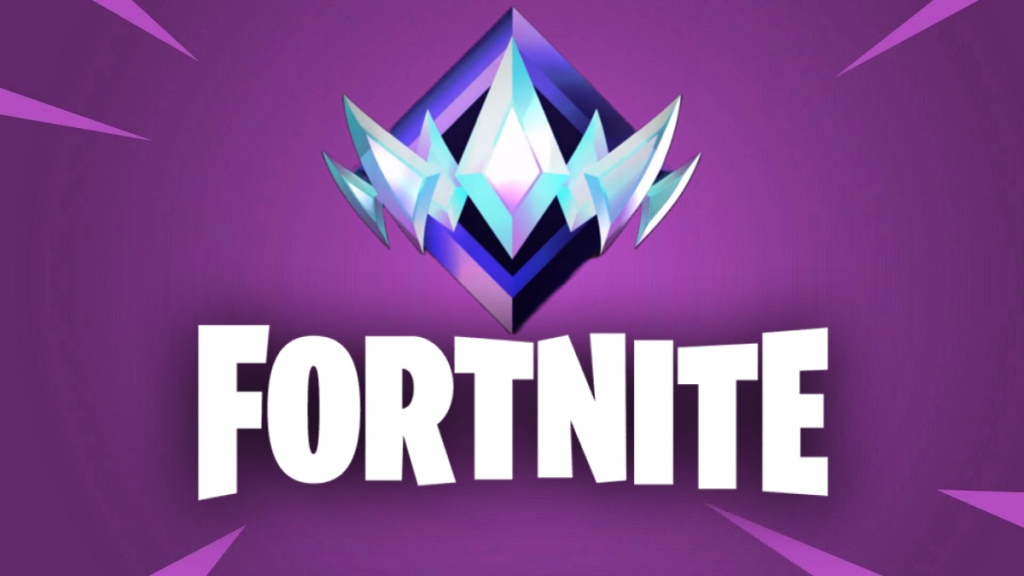
The highest rank in Fortnite is known as Unreal, which according to Fortnite Tracker’s latest statistics, only around 0.4% of the total player base (about 19,000 users worldwide across all devices) are at this elite level.
It’s a rank reserved for top-end gamers and streamers like Peter “PeterBot” Kata is widely considered to be the best Fortnite player in 2025, Crush.BDS, Twitch Perkcules, Wendiger Schmali, and Daywalker.36.
How the Fortnite Ranking System Works
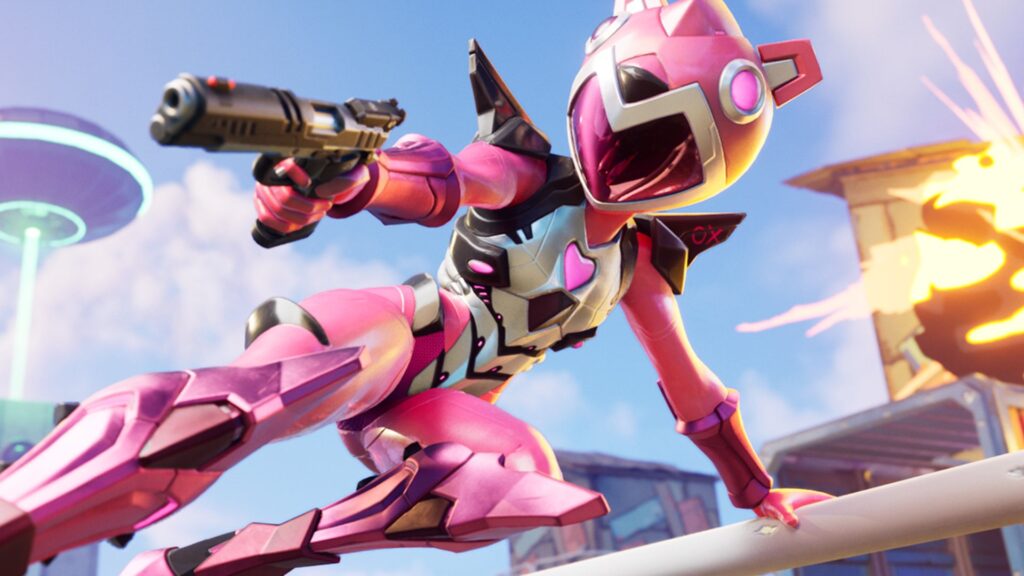
Fortnite’s ranking system is built around a straightforward but finely tuned method of progression, rewarding players for their in-game performance rather than sheer luck or one-off wins. Whether you’re aiming for the top tiers or just trying to improve your standing, understanding how the system works can help you climb the ranks faster and more efficiently.
At its core, Fortnite’s ranked mode operates on a linear progression system, meaning your rank improves gradually based on how well you play across multiple matches. Every match you take part in contributes to your rank, with points awarded for a wide range of actions — not just wins.
Key factors that influence your ranking include:
- Placement: The higher you finish in a match, the more points you’ll earn. A Victory Royale naturally gives a significant boost, but even consistently finishing in the top five or top ten can steadily improve your standing.
- Eliminations: Taking out opponents contributes positively to your rank, especially when paired with strong overall performance.
- Team Play: If you’re in ranked Duos or Trios, supporting your squad and making smart team decisions also adds to your progress.
- Risk and Activity: Being active throughout the match — especially taking risks in or near the storm zone — and completing in-game objectives or missions also factors into your overall score.
- Damage Dealt: Even if you don’t secure the final elimination, the amount of damage you deal still counts.
You don’t need to win every game to climb the ranks — though it certainly helps. Fortnite’s system values consistency over occasional brilliance, so steady improvement, smart gameplay, and regular participation are more important than streaky wins.
Playing solo is often the fastest route to ranking up, as you’re entirely in control of your performance and aren’t reliant on teammates. However, strong team coordination in Duos or Trios can also work in your favour if everyone’s contributing effectively.
Your rank is based on your overall match history, not just your most recent performance. This means if you’re starting out in the lower ranks, it may take time — but with regular play and solid in-game decisions, you’ll see progress.
Whether you’re grinding solo or teaming up with friends, remember: every action counts. Keep the pressure on, stay active, and focus on your consistency to climb the ladder in Fortnite’s ranked mode.
Fortnite Rank Distribution

With over 4.7 million players actively participating in Fortnite Ranked in 2025, you might be wondering where you stack up against the competition. While you’ll find a wide variety of players across the different tiers, certain ranks have become home to a large portion of the player base — and it’s not always where you’d expect.
There are 18 possible ranks in Fortnite as we previously mentioned, starting at Bronze 1 and going all the way up to Unreal. But among all of them, it’s Silver 1 that sees the most action. With 9.9% of players competing at this level — around 472,000 people — it’s the rank where you’re most likely to find yourself matched against similarly skilled opponents.
By contrast, Bronze 1 is the starting point for everyone entering Ranked for the first time. It accounts for 5.8% of the player base, which may sound low, but it’s worth remembering that players usually move beyond this tier relatively quickly. In fact, Bronze 2 and Bronze 3 are more populated, sitting at 7.5% and 8.2% respectively.
If you’re aiming high, ranks like Elite and Champion represent impressive achievements. However, they’re not easy to reach. Only around 4% of players have made it to Elite, and things get even more exclusive from there — just 1.6% currently hold the Champion rank.
And if you’re wondering about Unreal, the highest rank possible, it’s a title held by fewer than 1% of all players. Getting there requires not just skill, but consistent performance over many matches.
One key thing many players overlook is that your rank is not universal across Fortnite’s modes. Battle Royale and Zero Build (as well as playlists like Reload, OG, and Ballistic) all have separate ranking systems. So, while you might be sitting comfortably at Platinum 1 in Battle Royale, your Zero Build rank could still be down at Bronze 2 — or vice versa.
That separation means you’ve got a choice: either focus your efforts on one mode to climb efficiently, or split your time and try to stay balanced across the board. Whether you prefer building mechanics or a more stripped-down firefight will definitely influence where you perform best — and where your rank ends up.
Your progression depends entirely on how you play. Strong performances can push you forward with just three to six solid wins, but if you’re playing more casually or inconsistently, the climb could take a while. That said, even if they’re not reaching the top, most players are improving and shifting around within the mid-tier ranks.
At the end of the day, whether you’re just starting out in Bronze or working your way up to Champion, understanding where others are placed gives you useful insight into how competitive each level really is.
How to Rank Up Fast in Fortnite
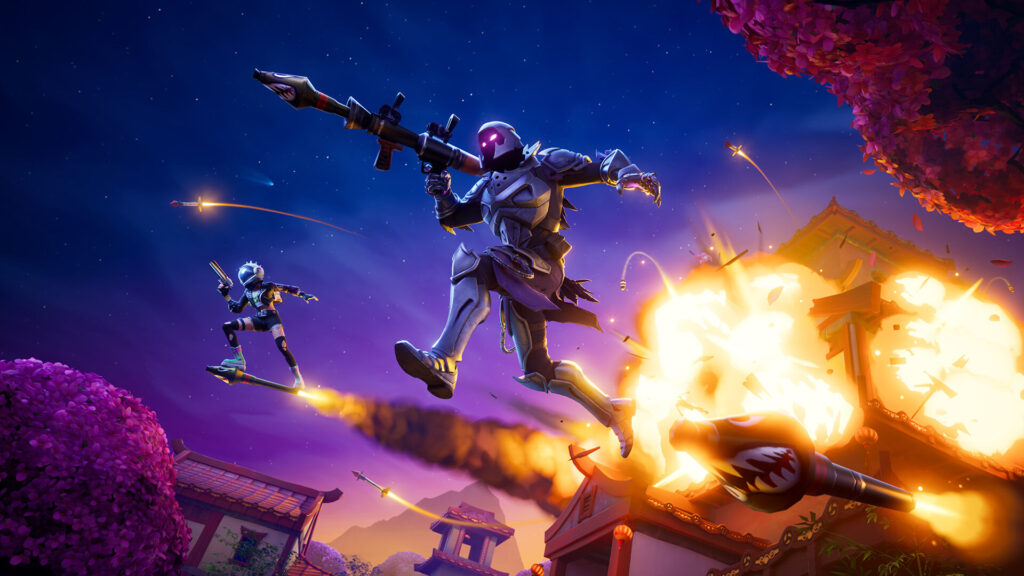
Climbing the ranks in Fortnite isn’t a quick process, and there’s no cheat code to suddenly rocket up the leaderboard. But if you’re serious about improving your performance, ranking up is entirely within reach — it just takes consistency, patience, and a solid understanding of the game’s core mechanics.
The most important step towards ranking up is working on your fundamentals. Every point you earn in Fortnite comes from how well you play during a match, so your overall performance is key. It’s not just about winning — though that helps — but how you play, how long you survive, and how you handle each encounter.
If you want to stay alive in the heat of battle, you’ll need to win gunfights, and that means getting comfortable with Fortnite’s third-person shooter mechanics. Unlike some games where you start with a standard weapon loadout, Fortnite makes you scavenge or buy your weapons — whether from chests, vending machines, or fallen enemies. And with over 200 weapons appearing throughout the game’s various chapters, staying up to date with the current arsenal is part of the challenge.
You’ll perform much better if you learn to control weapon recoil and fire in short, accurate bursts, rather than going full auto and hoping for the best. Shooting while crouched also increases accuracy, especially at medium to long range. Don’t be afraid to hop into Playground Mode to practise. It’s a great space to experiment with different weapons, test their spread, and get a feel for how they behave at different distances.
Rather than relying on a run-and-gun strategy, many top players learn to combine movement, positioning, and precision. You don’t need to hit every shot — but you do need to land the important ones when it counts.
When it comes to improving your rank, playing solo matches can give you more control over your results. You don’t have to worry about team coordination, and you can focus fully on your own strategy. Going solo also makes it easier to track your progress and spot areas for improvement.
If you’re serious about ranking up, try to:
- Complete challenges when possible.
- Seek out engagements and practise combat.
- Aim for high placements, especially top 5 or top 10.
Winning a game here and there is great, but it won’t make a lasting impact unless you’re consistently performing well. A few strong matches followed by a streak of average ones won’t help your rank as much as steadily finishing in the top tier of each match.
One of the most common mistakes players make is chasing wins without focusing on the bigger picture. If someone wins a match and then performs poorly in the next 10, their rank may actually stall or even drop. But someone else who finishes top 10 repeatedly — even without a win — is more likely to see steady improvement.
Ultimately, the best players know that regular practice and a willingness to learn from their mistakes is what sets them apart. You don’t need to win every game, but you should be aiming to get a little better with each session. If you keep working on your gunplay, movement, and decision-making, your rank will rise — it’s just a matter of time.
So take your time, play smart, and keep at it. They say patience is a virtue, and in Fortnite, it’s the difference between staying stuck and reaching the next level.
Why Ranks Matter
For many players, ranks add a sense of purpose. They give you something to aim for and a way to measure improvement. It also makes matches more intense — you know that each fight could be the one that gets you promoted (or demoted).
And for those aiming to break into the competitive scene, ranks can help get you noticed. Being in Champion or Unreal shows you’ve got serious skill, and that’s something others — including potential teammates or even orgs — might look out for.
Fortnite Rank Decay
If you’ve ever worried about losing your hard-earned Fortnite rank just because life got busy, there’s some good news — rank decay in Fortnite isn’t as punishing as in some other competitive games. However, that doesn’t mean your position is completely locked in forever. Here’s how it works.
Unlike games that slowly chip away at your rank due to inactivity, Fortnite doesn’t feature strict rank decay in 2025. That means if you take a short break during a season, you won’t immediately be dropped to a lower tier. However, that doesn’t mean your rank is permanent.
At the end of every season — and at the end of each chapter — all ranks are reset in both Battle Royale and Zero Build modes. So even if you’ve climbed to a high position, the slate is wiped clean when the next season rolls around.
Once a season resets, you’ll need to complete placement matches to determine where you stand. These aren’t just for show — they actively determine your new starting rank, taking into account your eliminations, match placements, and general performance.
Interestingly, you won’t necessarily drop all the way back to Bronze 1. Epic Games takes your previous season’s efforts into account when calculating your new placement — at least in theory. So, players who consistently performed well might find themselves starting higher than those who barely played.
Players at the top of the ladder — Elite, Champion, and especially Unreal — are unlikely to experience a dramatic drop during these resets. These upper-tier ranks don’t contain levels like the others, and if you’ve reached them once, it suggests a consistent level of skill that isn’t easily dismissed.
That said, these players will still go through placement matches like everyone else, and a lack of activity across a season could result in a harsher adjustment.
It’s also worth noting that rank resets and decay aren’t universal across all game modes. Modes such as Reload and Ballistic feature separate ranks, and their timelines may differ slightly. Epic Games typically announces the end of each season across their official social media channels, so it’s worth keeping an eye out to stay informed.
With each season lasting around three months (or 90 days), there’s ample opportunity to maintain or improve your rank through regular play. However, logging in sporadically or only engaging in a handful of matches may not be enough to hold onto your previous season’s position.
While Fortnite may not penalise you for taking short breaks, those who play often and stay sharp are better positioned when the reset arrives.
Final Thoughts
Fortnite’s ranked system offers a great way to challenge yourself and track your progress. Whether you’re just starting out in Bronze or grinding your way to Unreal, remember — it’s all about learning and having fun along the way. Play smart, stay positive, and who knows — maybe you’ll be the next name on that Unreal leaderboard.
FAQs About Ranks in Fortnite
What are the ranks in Fortnite?
Fortnite’s Ranked system features 18 competitive ranks, spread across multiple tiers: Bronze, Silver, Gold, Platinum, Diamond, Elite, Champion, and the top-tier Unreal. Each tier from Bronze to Diamond has three levels (e.g., Bronze 1, Bronze 2, Bronze 3), while Elite, Champion, and Unreal are standalone ranks. Your placement depends on performance during matches, including eliminations, placements, and overall consistency.
Is Fortnite in the top 10?
Yes, Fortnite consistently ranks among the top 10 most popular and played games in the world. With millions of active players across consoles, PC, and mobile, it continues to dominate the gaming landscape. Its evolving content, competitive scene, and collaborations keep it relevant year after year.
Who has the most wins in Fortnite?
The player with the most wins in Fortnite can vary over time, but Fortnite Tracker and similar leaderboard websites typically show long-time grinders like Ship or TTV R1xbox at the top. These players often have tens of thousands of wins across various modes and platforms. It’s worth checking updated stats regularly, as the leaderboard can change depending on activity.
How do I check my rank in Fortnite?
You can check your current Fortnite rank directly in-game from the main lobby screen by switching to the Ranked tab. This will display your current tier and division in both Battle Royale and Zero Build, depending on which mode you’re playing. Alternatively, you can use third-party stat trackers like Fortnite Tracker to get detailed match history and performance insights.
How to get Power Ranking in Fortnite?
Power Rankings, often referred to as PR, are different from your in-game rank. These are calculated based on your performance in Epic-sanctioned tournaments and events. To get PR, you’ll need to:
- Compete in official Fortnite tournaments such as Cash Cups, FNCS, and other events.
- Place high enough to earn points and prize money.
- Have a connected Epic Games account linked to Fortnite Tracker or similar platforms where PR is calculated.
Power Rankings are mostly used within the competitive Fortnite community to assess a player’s skill and consistency at the highest level.


